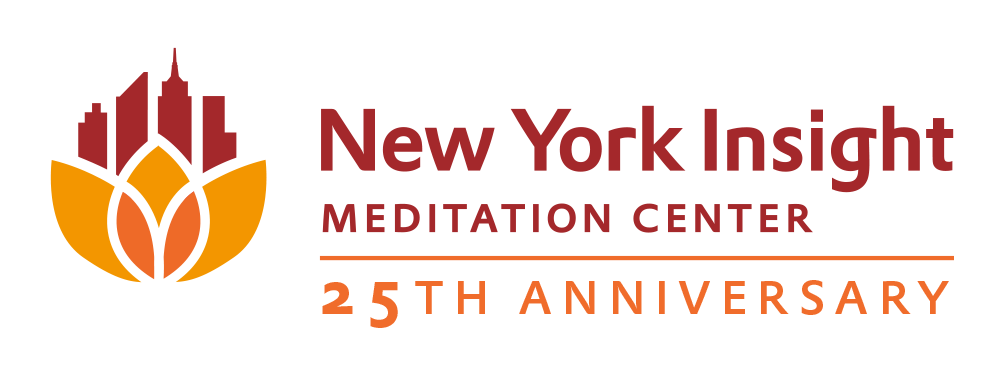A funny thing happened on my way to learning about meditation: I got more than I bargained for.
My 1st introduction to meditation was in the 1980s through yoga, which became a dedicated practice I developed after many classes at Kripalu Center for Yoga. That decade also took me to Mindfulness Based Stress Reduction (MBSR). I didn’t know that fundamentally it derived from the Buddha’s teachings. New York Insight was just about to be formally founded and was operating as a group of locally itinerant teachers who toted a Buddha in a box, known as a “Buddha buggy.”
Looking back, the type of yoga I was practicing was an expression of what we’d call mindfulness of the body, the first foundation of mindfulness. I had looked for a group to meditate with here and there, but when I found New York Insight I also found one of their off-site sanghas within walking distance of my home. I settled into the Brooklyn sangha and sat with them virtually every week for eight years. At a time when most of my life had fallen apart, this sangha made room for me — kind, patient, good-hearted, good-humored space that was centered over and over again in the practice and the Buddha’s teachings. As may be true for many of us who reach for the practice out of a fracture in our lives, I was there for me, my suffering. But of course the Buddha didn’t frown on that, quite the opposite.
It was a while before I noticed that the kindness and open-heartedness our leaders and teacher demonstrated week after week was offered to everyone, with very rare exception. This is a “growing edge” for me that I am still sharpening. But the point is that my experience in sangha was about our shared humanity. I was working to learn how to meditate, sometimes arriving to a sit so drenched in rain I had to squeeze out my pants with paper towels in the restroom. I was listening to teachings and dharma talks, sitting, breathing, walking, noticing, falling off the practice wagon (if not the chair) and getting back on, applying the practice “off the cushion,” getting guidance from leaders, our teachers, and my fellow students. But I was also learning about what a sangha really was.
Even so, things change, and something else I hadn’t quite planned on happened… I grew older. Now I regularly sit with NYI’s Aging as A Spiritual Practice sangha. And I still remember that on the very first meditation tape I used way back when, the instructor broke into the sit with the question “Where is your mind?” Yet there has seldom been a day in many, many days when I do not ask myself, “Where is your heart?” Because now life is telling us that we can’t each of us just keep having our own personal experiences. We can’t only focus on our own suffering.
In a time of a novel virus and a sadly “novel” awakening to racial, political, and economic suffering, we literally breathe together, or literally and metaphorically, we do not. That’s the thing about home – feeling at home, being at home, and certainly in the context of the practice, home being where the heart is. One of the things I’ve learned through practice is to honor my feeling that I am not at home unless most everybody else is, too. Thanks to my teachers and fellow students at New York Insight and elsewhere, I know that this moment – oh, it’s already gone, whssh! – arises and passes. I know there are practices and remedies for the moments that arise and return too insistently to be ignored. And so here in America, and here where I sit, I think that sorting out the sharing of our painful moment is a work in progress that can be equanimous and wise even as it is passionate and kind. And I know too that each time I thought there was only so much my heart could hold, the Buddha’s teachings, the dharma and the sangha here and in our larger community have shown me again and again just how much more room there is.
And I thought I had only come to meditate…
— Monci J Williams

